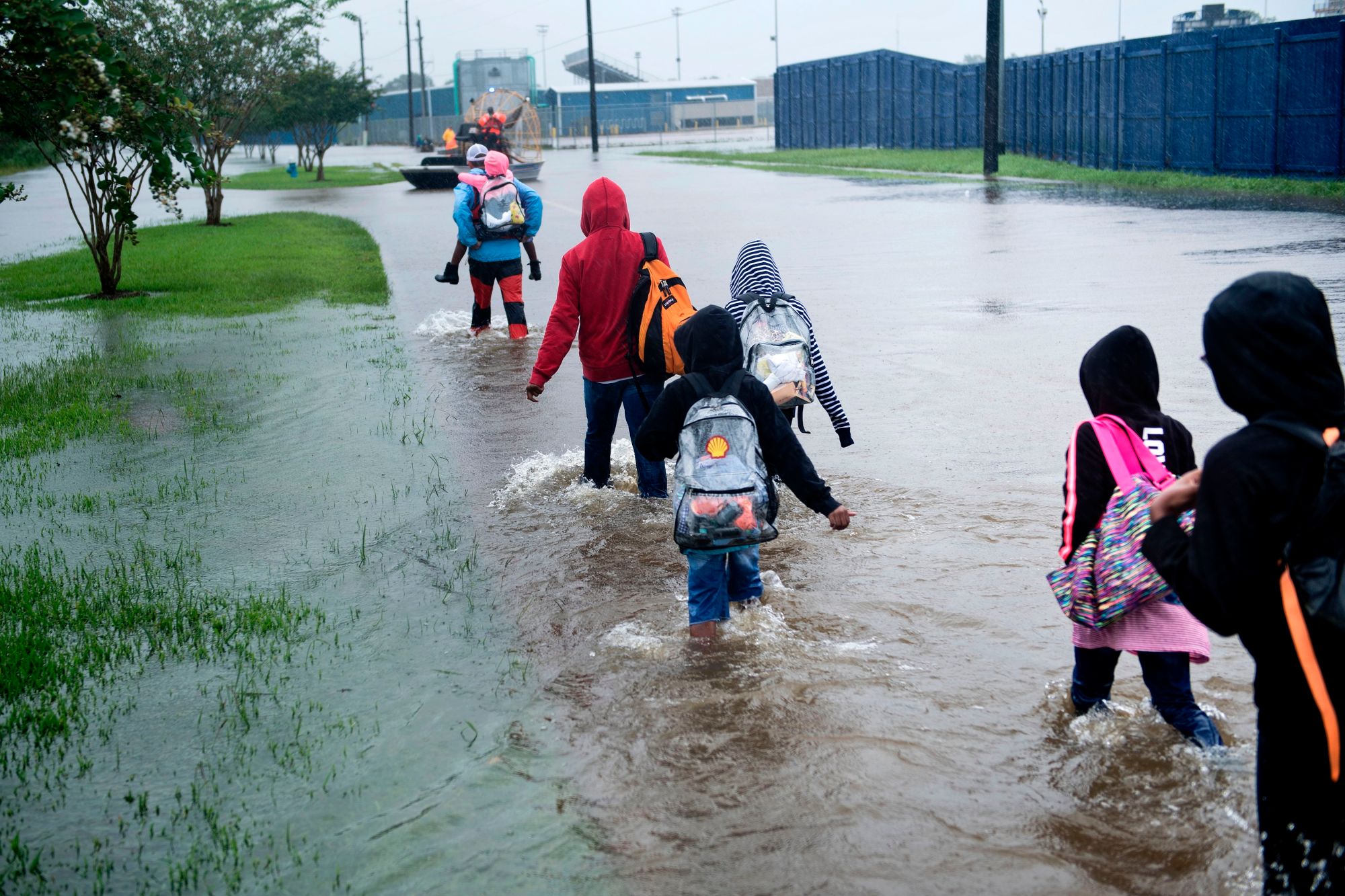This story was produced as part of the nine-part series “Are We Ready? How Schools Are Preparing – and Not Preparing – Children for Climate Change,” reported by HuffPost and The Hechinger Report, a nonprofit, independent news organization focused on inequality and innovation in education.
Swollen rivers swamping entire towns in Iowa. People piloting boats through deluged streets in southern Illinois. Surging floodwaters from Hurricane Dorian overtaking North Carolina’s Outer Banks.

Last year was the second wettest on record for the contiguous United States. Climate change is one factor that’s exacerbating flood risks across the country, and the damage is adding up: The 2010s saw twice as many natural disasters causing at least a billion dollars in damage as the previous decade.
As part of our reporting on climate change and America’s education system, we wanted to see how vulnerable schools are to extreme weather. We wondered: Which schools are at risk from worsening floods? In the graphic below, we use hazard maps from the Federal Emergency Management Agency, or FEMA, to allow you to search for your city or town and see if schools in your area have potential exposure to flooding.
Are We Ready?
This nine-part series explores how we’re teaching through climate change. We report on how climate change emergencies are disrupting student learning, exacerbating mental health problems, devastating school infrastructure, and how the coronavirus pandemic is a preview of what education looks like in a climate emergency. We also look at how textbooks are coming up short in teaching kids about climate, how medical schools are preparing future doctors, and how despite the obstacles some educators are finding ways to give students skills they need to better protect themselves and their communities.
Severe weather poses all sorts of challenges for educators and students. It can force schools to shut temporarily and keep kids at home (which, as we’re seeing now with coronavirus-related closures, is very disruptive to learning). It can cause infrastructure damage, which has been happening in coastal Louisiana. There, job losses, coastal erosion and floods caused people to move away, leading to diminishing school enrollment and, in some cases, permanent school closures. Those population changes, sometimes called “climate migration,” starve some schools of resources and lead to overcrowding in others.
When kids return to school after severe flooding, they sometimes struggle with lingering stress and trauma. Because many schools are local hubs, offering meals, counseling and other services beyond academics, damage to them can have a disproportionate impact on their communities. And flooding can lead to health problems, by causing mold that contributes to respiratory issues as well as unearthing toxic chemicals.
“Floodwaters can bring a whole host of issues,” said Perry Sheffield, an assistant professor at the Icahn School of Medicine at Mount Sinai and lead author of a study on the environmental hazards of climate change and schools.
No region of the United States is immune, but this isn’t a problem that hits everyone equally. Schools in low-income communities may be disproportionately affected, since they are more likely to be in low-lying areas and have limited access to adaptive technology, said Joseph Kane, an associate fellow at the Brookings Institution.
Public awareness of flood risks tends to be low, Sheffield said, which can dampen emergency preparedness efforts. If you find that your school is located within or near FEMA’s 100-year flood zone, contact your school district to ask what it is doing to prepare for potential flooding.
The flood map visualization was produced by Pete D’Amato


At The Hechinger Report, we publish thoughtful letters from readers that contribute to the ongoing discussion about the education topics we cover. Please read our guidelines for more information. We will not consider letters that do not contain a full name and valid email address. You may submit news tips or ideas here without a full name, but not letters.
By submitting your name, you grant us permission to publish it with your letter. We will never publish your email address. You must fill out all fields to submit a letter.